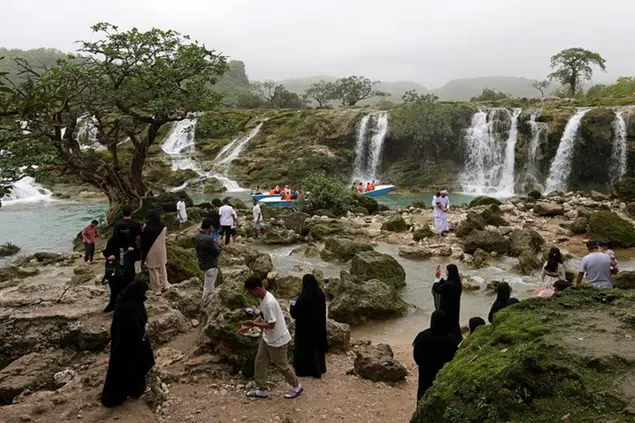PHOTO
Wadis are one of the most important tourist destinations in Sultanate of Oman. These wadis (valleys) are the arteries of life and a haven for recreation. Studies indicate that Wadi Bani Ghafir is considered the longest valley, with a length of about 60 km, while Wadi Al Hooqain extends for a distance of more than 37 km. Most of these valleys are constantly flowing, and waterfalls flow from them, adding natural beauty to many mountainous areas that attract hundreds of tourists. These waterfalls can be seen in Wadi Shab, Wadi Bani Khalid, Wadi Al Arbieen and Wadi Al Hooqain.
These valleys form a unique ecosystem characterised by multiplicity, diversity and natural richness. There are many residential communities and farms on the banks of these valleys that contribute in supporting local markets with unique types of food products.
Some valleys are characterised by their water flow between the banks of towering mountains. This environment provides exceptional tourist attraction including the discovery of caves, grottoes, and rare geological formations. Visitors to some of the valleys are also drawn to the presence of castles and fortresses built on the mountaintops and highlands surrounding the valleys. All these valleys are considered natural outlets and the government is paying great attention to provide basic services to tourists who come to spend their holidays on their banks.
“We organise trips on a weekly basis to various tourist areas in Sultanate of Oman, and the valleys are given special priority in various tourist programmes that we organise. Most tourists prefer to practice hiking and swimming, then camping on mountains that surround these valleys,” Mohammed al Wahaibi, an Omani tour guide told the Observer.
“Of course, tourism along the valleys is not limited to sports activities only, but we host many tourists from the Gulf countries and Western countries in particular who practice hobbies like bird watching and documenting them in photography. They come to Oman to record new species of birds, animals and wild plants or to discover geological sites located near these valleys,” the source added.
As the number of tourists to these natural sites increases, the demand for developing and improving services that directly contribute to enhancing the level of eco-tourism is also increasing. Tourist guides hope to expedite the implementation of these services, which have become a necessity, especially since the tourist season for the northern regions of Oman has started early this year.
2022 © All right reserved for Oman Establishment for Press, Publication and Advertising (OEPPA) Provided by SyndiGate Media Inc. (Syndigate.info).
